Parc Sangnim (상림공원)
13.3 Km 31401 2021-12-22
49, Pilbongsan-gil, Hamyang-gun, Gyeongsangnam-do
+82-55-960-5756
Situé dans la ville de Hamyang-gun dans la province du Gyeongsangnam-do, le parc Sangnim était à l’origine une forêt baptisée Hoanrim, fondée il y a 1 200 ans afin de protéger les berges du fleuve. Ce parc est si réputé dans la région qu’il existe un proverbe déclarant « On peut oublier sa ville natale, mais on ne peux pas oublier Sanglim. ». Le parc est classé monument naturel n° 154.
Mont Hwangmaesan à Sancheong (황매산(산청))
13.7 Km 41839 2021-05-25
Hwangmaesan-ro 1202beon-gil, Sancheong-gun, Gyeongsangnam-do
+82-55-970-6421~3
Situé à Hapcheon dans la province du Gyeongnam, le mont Hwangmaesan haut de 1 108 mètres est formé des trois pics de Habong, Jungbong et Sangbong. Comme la montagne se reflète dans les eaux du lac de Hapcheon, elle est également appelée « Sujungmae » (qui signifie « fleurs d’abricotier japonais sous l’eau »). Au printemps, les azalées et les rhododendrons recouvrent la montagne entière. En été, la zone de la vallée est agréablement fraîche. En automne, on peut entendre partout le chant des oiseaux, et en hiver, des vents violents soufflent sur le sommet enneigé du pic de Dongnipbong.
En débutant votre parcours à Sanjae et en dépassant Mujigaeteo, les randonneurs venus visiter Guksadang et le rocher de Sungyeol de la forteresse de Hwangmae peuvent admirer la vue des flancs de la montagne recouverts de rhododendrons alpins.
Parc régional de Hwangmaesan (황매산 군립공원)
14.5 Km 4735 2021-03-23
331, Hwangmaesangongwon-gil, Hapcheon-gun, Gyeongsangnam-do
+82-55-930-4752
Situé dans le District de Hapcheon entre Gahoe-myeon et Dunnae-ri, la montagne de Hwangmae-san est rebaptisée Parc Régional de Hwangmae-san le 18 novembre 1983.
Cette montagne est connue pour son festival qui a lieu chaque année début mai, et où les azalées en fleur offrent une vue magnifique du site. Il est possible d’y faire des randonnées en toutes saisons : en été pour un paysage vert ou en automne pour admirer les mischanthus.
Hamyang Ildoo Gotaek
15.0 Km 7820 2021-04-09
50-13, Gaepyeong-gil, Jigok-myeon, Hamyang-gun, Gyeongsangnam-do
+82-55-962-7077
The Old House of Ildu in Hamyang is the birthplace of Jeong Yeo-chang (1450-1504, pen-name: Ildu), a great Neo-Confucian scholar of the Joseon Dynasty. It is situated at the center of Gaepyeong Village, where many members of the Hadong Jeong clan and the Pungcheon Roh clan settled, in Jigok-myeon, Hamyang. The house is considered an invaluable historic material for studies on the architectural style of the 17th to 18th centuries and the history of the Joseon Dynasty.
The house covers a total area of 9,917m2 and consists of the haengrangchae (servants’ quarters), sarangchae (a detached building used as a reception room for male guests), jungmunganchae (middle gate building), anchae (the inner house), araechae (outhouse near the gate), gobang (storeroom), shrine, gotganchae (warehouse), and a tall gate. Upon entering the house, visitors will notice an earthen wall that divides the sarangchae, which is built on a high foundation, from the other spaces so as to prevent visitors from looking inside the women’s spaces and shrine. The house’s most distinguished feature is the sarangchae, whose role and size were expanded, unlike other hanok houses at that time. The sarangchae was built in a “ㄱ”-shaped layout and is connected to the “ㅡ”-shaped jungmunganchae. Notably, the sarangchae’s numaru (attic, upper floor) is a well-designed library that attests to the scholarly spirit of Jeong. After entering via the Ilgagmun Gate (front gate with two posts and a roof), a middle gate comes into view. After passing this gate, there is the “ㅁ”-shaped anchae, or women’s quarters, with a courtyard. Then, after passing a room of the anchae, there is the gotganchae flanked by the shrine and the an-sarangchae.
Currently, the house provides a variety of accommodation including four rooms in the haengnangchae, two rooms in the an-sarangchae, and three rooms in the sarangchae. The latter two are equipped with outside toilets. In particular, the sarangchae, as the core space of the house, offers an open view of Seokgasan Mountain from the numaru (upper floor) of the Takcheongjae Building. Although the house is designed and decorated with antique household objects, furniture and interior items, the toilets and bathrooms are modernized for guests’ convenience.
As the Old House of Ildu has been designated as National Folklore Cultural Heritage No. 186, it is maintained by the local administrative office. However, Jeong Ui-gyun, an 18th-generation descendant of Jeong Yeo-chang, lives in a house in the orchard opposite the Old House of Ildu, and comes and goes constantly. Although cooking is not possible at the house, Jeong allows guests to have a garden party or cook in his large garden next to the detached building.
La Vallée Hansin (한신계곡)
15.5 Km 9812 2020-01-03
Gangcheong-gil, Macheon-myeon, Hamnyang-gun, Gyeongsangnam-do
+82-55-970-1000
La vallée Hansin est située à Hamyang-gun dans la province de Gyeongnam, Elle commence à partir de Chotdaebong Peak et du sommet Yeongsinbong à Jirisan, puis croise la vallée Hansinji aux cascades Ganeso pour continuer ensuite à Baengmu-dong (백무동). En raison de sa topographie compliquée, la vallée Hansin est moins visitée et conserve encore ses forêts intactes. Seuls les randonneurs de longues distances ont l’habitude de s’y rendre. Pendant la saison estivale, la région de la vallée est un endroit très prisé pour les vacances en raison de ses forêts denses et fraiches ainsi que son eau claire. L’endroit est aussi très beau pour ses feuillages d'automne et ses paysages enneigés l'hiver.
Parc National du Jirisan (Hamnyang) (지리산국립공원 - 함양)
16.3 Km 14035 2021-01-28
Gangcheong-ri/Chuseong-ri, Macheon-myeon, Hamnyang-gun, Gyeongsangnam-do
+82-55-970-1000
Pouvant s’enorgueillir de magnifiques vues sur une nature radieuse, le mont Jirisan est le premier parc national coréen. Sa montagne splendide s’étend sur trois provinces incluant le Jeollabuk-do, le Jeollanam-do et le Gyeongsangnam-do. Il existe de nombreux sites que les touristes pourront contempler. La montagne est le foyer de 6 temples dans la région de Gyeongsangnam-do : le temple Ssanggyesa, le temple Daewonsa, le temple Naewonsa, le temple Beopgyesa, le temple Chilbulsa et le temple Silsangsa. Par ailleurs, les cascades et vallées créent des scènes panoramiques à en couper le souffle, notamment dans les environs de Hamyang, avec les vallées de Chilseon et Hansin dont la popularité n’est plus à prouver.
Parc National du Mt. Jirisan (Sancheong) (지리산국립공원 - 산청)
16.4 Km 6386 2021-09-03
Samjang-myeon/Sicheon-myeon, Sancheong-gun, Gyeongsangnam-do
+82-55-970-1000
Riche en montagnes et panoramas magnifiques, le parc national du Mt. Jirisan fait partie des plus beau parc de Corée, à ce titre il fut le premier en 1967 à recevoir l’appellation de parc national. Le parc se compose d’une chaîne de montagne d’une taille impressionante, s’étirant sur trois régions et sur le district administratif de cinq villes. Principal pic du parc, Cheonwang-bong culmine à 1.915 m d'altitude et est considéré comme le pilier du ciel. Le mont Jirisan est visité pour les pics de Banyabong et de Nogodan, ainsi que 10 temples réputés. On y trouve aussi une vingtaine de sommets et de vallées telle que celle de Baemsagol qui figure dans le top ten des plus beaux sites de Jirisan. Jirsan est aussi réputé pour être la forêt vierge la mieux préservée . Là, coexistent une multitude d’espèces animales et végétales, on y trouve des herbes médicinales et plus de thé que partout ailleurs en Corée. En temps que région où prospéra la culture bouddhiste, on y trouve des biens culturels d’importance tels que le temple Silsangsa (Trésor National No.7), Baekjangam et sa pagode en pierre de trois étages (Trésor National No. 26.). Cet héritage culturel régional et ces superbes paysages naturels offrent une vision unique sur la culture et l’histoire de la région.
A Jirisan, le climat est capricieux et seuls 80 à 100 jours de l’année sont clairs et ensoleillés. Néanmoins la brume et le brouillard créent des scènes qu’il est difficile de voir ailleurs.
La vallée Baegundong à Sancheong (백운동계곡 - 산청)
16.7 Km 7597 2019-12-19
Baegun-ro 51beon-gil, Sancheong-gun, Gyeongsangnam-do
+82-55-970-6421~3
La vallée Baegundong fait une distance de 5 kilomètres. Elle est composée de forets denses, de cascades ainsi que d’un enorme rocher (180 mètres carrés) appelé «Jeomjeong Rock». L'eau de la vallée coule sur des rochers en formant de nombreux petits lacs. Les cascades les plus célèbres sont Baeun Pokpo Cascade et Odam Pokpo. Beaucoup de touristes aiment visiter cette vallée pour ses azalées au printemps et son air frais en été.
Temple Silsangsa (Namwon) (실상사 - 남원)
17.4 Km 4830 2024-04-07
94-129, Ipseok-gil, Sannae-myeon, Namwon-si, Région Jeonbuk
+82-63-636-3031
Le temple Silsangsa fut construit par le moine Jeunggak comme l’un des neufs temples spéciaux de l’année 828. Le temple fut établi à cause de la théorie de divination, basée sur la topologie. La croyance dit que le bon esprit de la Corée s’en serait allé vers le Japon, apportant mauvaise fortune, si le temple n’avait pas été construit à cet endroit en particulier. Le temple fut reconstruit dans la vingt-sixième année du reigne de Sukjong sous la Dynastie Joseon (1700), après avoir été totalement détruit par les japonais en 1597. Toutefois, il fut presque incendié dans la dix-neuvième année du reigne du Roi Gojong (1882). Il est présentement préservé juste comme s’il appartenait à la Dynastie de Silla Unifié, avec sa pagode aux trois histoires et ses onze trésors pour un total de 17 biens culturels. L’entrée du temple s’étale au milieu d’une rizière et le temple a une vue champêtre, entourée d’arbres. A partir de l’entrée, vous pouvez traverser le pont en pierre en forme de demie lune et juste après, un remarquable totem.
Sancheongyulsuwon [Korea Quality] / 산청율수원 [한국관광 품질인증]
17.5 Km 13079 2023-04-13
36, Sindeunggahoe-ro Sindeung-myeon, Sancheong-gun, Gyeongsangnam-do
+82-55-974-0221, +82-10-9802-1132
Sancheong Yulsuwon was opened in October 2013 as traditional hanok accommodations to provide guests comfort and relaxation in nature. It was named after the expression from “Decade of Wen Wang” of the Classics of Poetry (the oldest existing collection of Chinese poetry), meaning “Following the virtue of ancestors, one should cultivate one’s mind,” in the hope that guests can experience traditional Korean culture in hanok and learn common themes and cultivate virtues in life. Located at the hanok street in Sancheong County, Gyeongsangnam-do Province, Sancheong Yulsuwon is a hanok stay facility established by Korea’s major education company JEI Corporation. It was built by expanding and renovating the Old House of Suncheon Park’s Clan for over four years. It is not only a hanok cultural facility but also an educational facility that aims to provide visitors comfortable relaxation and to establish a sound, rich environment of educational culture, which is also the philosophy of JEI Corporation. It is located around the Dumulmeori area where Dangyecheon Stream and Sindeungcheon Stream -- the water branch of Hwangmaesan Mountain (1,108m above sea level) -- meet. The area is known for many houses of noble families situated in a propitious site combined with mountains and water and as a hanok village with the old stone wall, which was designated as a cultural heritage. Among them, Sancheong Yulsuwon is an outstanding hanok structure built on a total area of about 2,975m2 according to the theory of divination based on topography.
Entering the main gate Yeongsumun, one sees the Anchae (inner house) situated in front, the outer Sarangchae (detached building) on the right, and the bathroom on the left. Then, there are the inner Sarangchae, the kitchen, and the pavilion around the vegetable garden and the pond. The arrangement of buildings has special meaning: the kitchen signifies a green dragon (east), the bathroom, a white tiger (west), the inner Sarangchae, an Ansan (a low and small mountain in front of the house), and the outer Sarangchae and the main gate, a Josan (a high mountain behind Ansan); these five buildings seem to embrace the Anchae. As for the special names of the buildings, the inner Sarangchae built with the splendid style of semi-hipped roof and double eaves was named “Nongam,” meaning “a thatched cottage of a skilled farmer”; the outer Sarangchae was named “Goheon,” meaning “an old sarangchae,” and the Anchae -- named “Hagyejae” meaning “modesty” -- is situated in the innermost area. In particular, its upper floor (numaru) offers an open view of the environment. The bathroom, which was named “Seoljodang” meaning “one should keep the mind and body clean,” is composed of two connected houses. It is also equipped with red clay sauna and jjimjilbang (Korean dry sauna).
Sancheong Yulsuwon was built based on a traditional hanok style of the Yeongnam area, with a splendid Seoul style of modernity added to the design. The sunshine comes through the windows made of hanji (Korean paper) in the clean and cozy rooms. Guests can also enjoy the outside view from the windows, which show the typical scenery of hanok consisting of jars, trees, flowers, and low stone wall with tiled roof. Every room is equipped with a bathroom including a bathtub and a modern-style kitchen. Sancheong Yulsuwon is adjacent to various tourist attractions including the following: valley of Daewonsa Temple surrounded by Geumgang pine trees; Namsa Yedamchon village, a village with an old wall made of red clay and stones; and Jeongchiwam Hermitage, Traditional Buddhist Temple No. 83 built by Silla’s Buddhist monk Uisang (625-702) and where the Buddhist Painting of Mountain Spirit can be found.

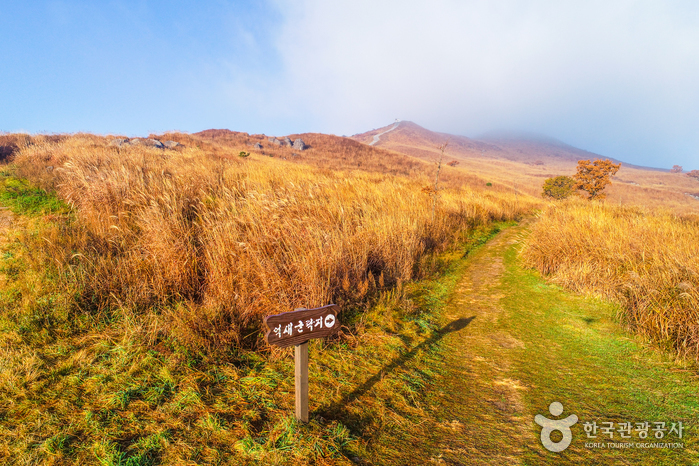
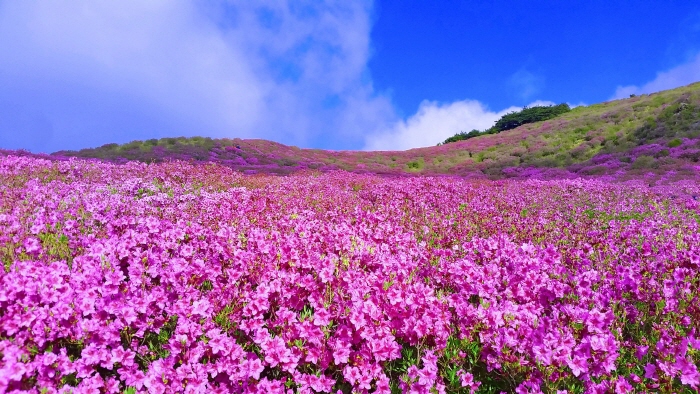
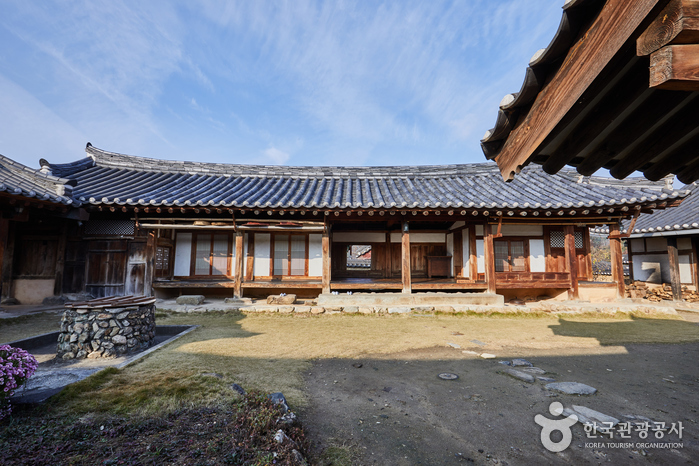
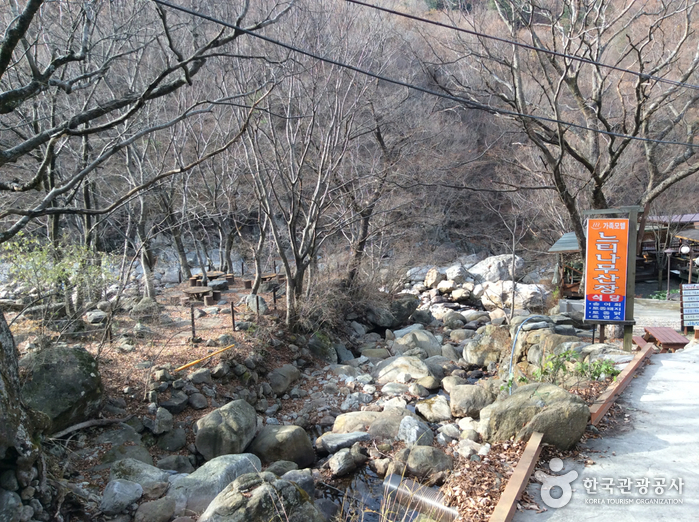
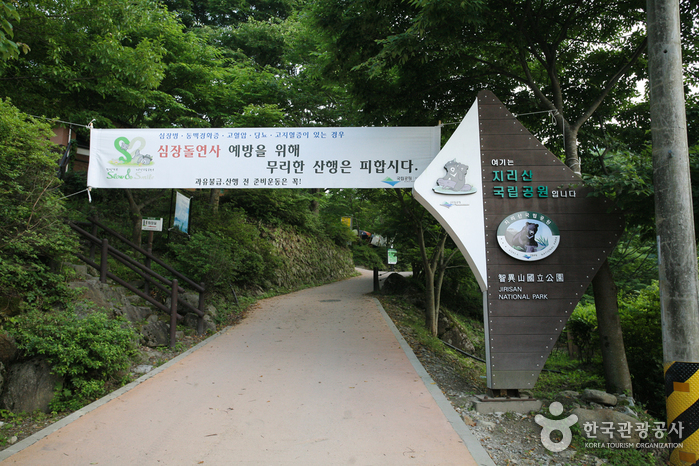
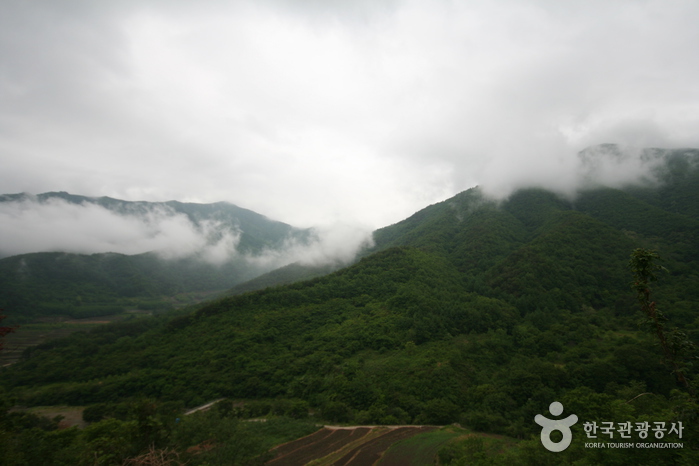
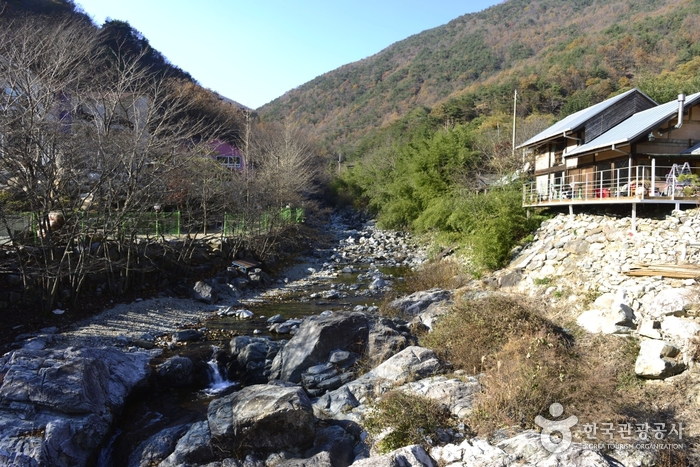
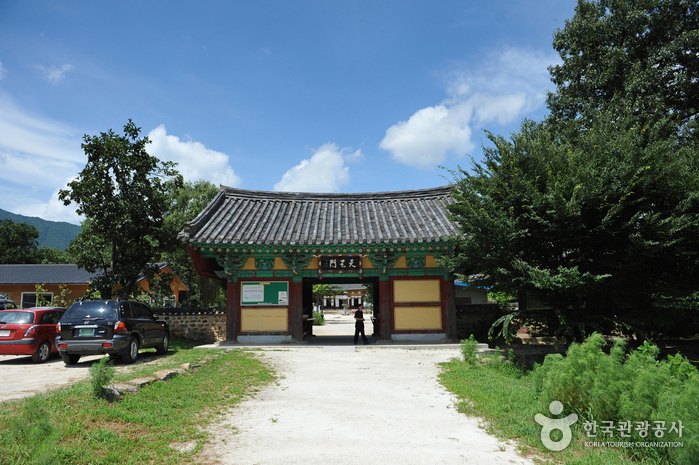
![Sancheongyulsuwon [Korea Quality] / 산청율수원 [한국관광 품질인증]](http://tong.visitkorea.or.kr/cms/resource/07/2631407_image2_1.jpg)
 Français
Français
 한국어
한국어 English
English 日本語
日本語 中文(简体)
中文(简体) Deutsch
Deutsch Español
Español Русский
Русский